
12 Factors That Make The Best Hunting Rifle For Australia
12 Factors That Make The Best Hunting Rifle For Australia , the choices range from being economical to shoot, great power to weight ratio, choice of cartridge types and the appropriate take down power for the class of hunting.
Table of Contents
The Hunting Rifle
The shooters choice is likely to be economical to shoot, great power to weight ratio, availability and choice of cartridge types.
My second centrefire rifle was a Heavy Barrel (HB) Howa .223 and its the rifle I refuse to leave it at home on any hunting trip simply because its accurate, economical and dispatches most Aussie ferals humanely. It’s just a pleasure to shoot. My Howa has a 1 in 9 twist so I can shoot up 69grn projectiles, meaning it can shoot it out to 1km on range days if I want the challenge, Ill break this down in a little more detail a little later in the article.
So enough on my choices, lets break down the nitty gritty of which rifle/action, barrel profile and stock rules the roost when selecting a hunting rifle that’s right for you.
What makes the best hunting rifle?
What makes a good boom stick? In my experience the things that make a quality rifle include, but are not limited to:
Of course there are exceptions to the above, and there will undoubtedly be some hate mail coming my way, however in my experience MOST (not all) rifles in todays market (fed with the correct ammunition) are very capable shooters.
However, when selecting the brand of your rifle there are a few hard and fast rules that I like to apply. My personal preference leans toward European or Japanese engineering.
1
Action
Now unless you have a class D license or live in the land of the free and home of the brave (USA), then you will be restricted to a bolt action or lever action rifle like the rest of us plebs. In my opinion this isn’t necessarily a bad thing, as you learn to value your first shot. As the bolt action is the imperial standard for accuracy, the article will focus on them for now (stay tuned).
So what do you take into account when selecting a good bolt action?
I’ve compiled a list of things I believe should be considered:
- Reliable round feed
- Short action stroke
- Smooth action
- Consistent feel
- Solid safety mechanism/operation
- Rigid construction
Read more on bolt actions in our article here: Push Feed vs Controlled Feed.
Video - Bolt Action Operation
This is where I tell you that its your rifle/action and what feels right to you might not feel right to me, or the next shooter. Think of it like buying a car, you might like one model and I might think it’s shit, this doesn’t mean it’s a shit car. A rifle is a very personal item I would encourage you to feel and work the action before making your decision, don’t just take your mates word for it.
Barrel contour or profile
So what is a barrel? In short, its a cylindrical piece of steel with hole bored through the middle. Some factors to be taken into consideration.
The heavier the barrel the more repeatable/accurate the shot. The same with barrel flexibility. While it may seem that a stiffer barrel may be more accurate, the opposite is actually true. For more on this please see our article here on barrel harmonics.
Accuracy is also decreased with an increase in barrel heat, just think what happens to steel when you apply heat. Whilst heat to your barrel can be dissipated with things like barrel fluting, It is best to understand the application for which you will be using your barrel profile to point you in the right direction when it comes to barrel profile. While heat to your barrel can be dissipated through methods such as barrel fluting, there are drawbacks such as decreased accuracy.
Length can be important too and definitely worth taking into consideration. While it can affect accuracy, for hunting it is more important to consider weight and maneuverability.
It ultimately comes down to what you will be using your rifle for, if you want a bench rest gun to carry through the woods you might best consider a 20 inch HB profile (or just get 2 :P).
Barrel Material
If you want a custom weapon for your next SAS deployment or you want to spend $7k + you’ll want to consider all of the following as barrel material options:
- Alloy Steels
- Stainless Steels
- Columbium (very rare)
- Aluminum (w/t steel liner)
- Titanium (w/t steel liner)
- Carbon Fiber (outer lining)
- Fibreglass (outer lining)
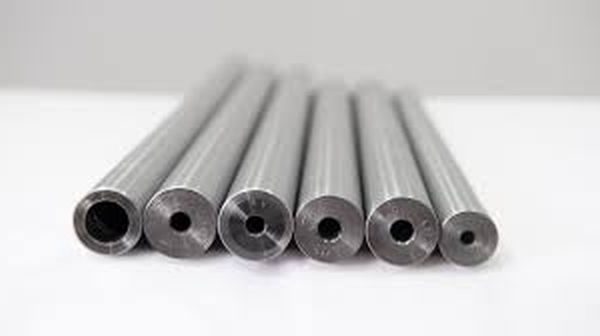
Many of the exotic materials mentioned above are paired with steel to decrease weight and increase barrel rigidity and although very nice, there simply not required for your everyday hunter. Making the above list far more manageable; limiting the selection to Alloy Steel and Stainless Steel.
So, Alloy Steel or Stainless?
Alloy steel barrels are the standard and offer an excellent balance of strength and cost. Unfortunately they are known to oxidizing in humid conditions which can be a nuisance. To combat this hunters have began cerakoting (polymer-ceramic painting) their alloy barrels (and receivers) to increase longevity when exposing their weapon to the elements for long periods, and it works (thanks America). Many Brands now offer a range of factory cerekoted weapons (and they generally look epic), worth a look! If you have an existing blued rifle there are Aussie companies that can cerekote your pride and joy. Ignition Custom Engineering in Adelaide is one such team of champion gunsmiths.
Video - Cerakote vs Blueing
Stainless barrels are being seen more and more, for good reason; stainless has superior heat erosion when compared to alloy steel, the wear and tear is heightened specifically relating to barrel life paired with substantial increased resistance to rust/oxidizing make for a very attractive choice when selecting your hunting rifle. Most of the major manufacturers have an attractive selection of stainless rifles, they are however more expensive.
Barrel twist
If your new to the sport you probably wont understand what the heck barrel twist is? Don’t worry, your not alone there are many seasoned shooters of whom don’t understand the principle, nor the importance of barrel twist rate.
So what is it?
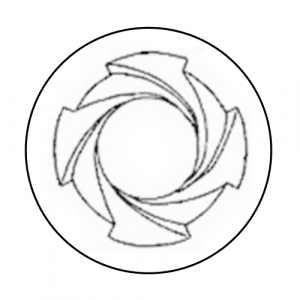
Twist rate refers to the rifling rate or spin rate of your barrel, unfortunately the standard measurement of twist is based off of the U.S. Imperial system which makes it difficult for us Aussies to grasp, for example if you see a 1:9 twist, it means the rifling of your barrel will spin the bullet once every 9-inches of rifling. if your bullet weighs too much for this twist rate, your bullet wont travel down range with enough stability (meaning no accuracy/or bullet tumble).
So how does this affect the rifle?
Varmint (Fox, roos and bunnies) rounds for the .223 for example are most commonly 55gr, in terms of twist rate a 1:12 twist will comfortably stabilize this projectile and will also also maximize muzzle velocity, however if you want to deviate from this bullet weight in the northern direction (I suggest you will) to dispatch piggys or wild dogs for example; or even to shoot at anything over 400m, you will be looking into a twist rate of 1:9 as you will still shoot a 55gr with plenty of accuracy but will stabilize most traditional bullets up to 75gr. As us Australians generally don’t deal with barrel lengths less than 20 inches 1:9 is usually plenty, however if your looking at a range gun you might want to look into anything up to a 1:7 twist (worth doing a little research here. from experience I would defiantly recommend a 1:9 or 1:8 (good all rounders).
Generally it is better to have too much twist than not enough.
Bolt and receiver construction
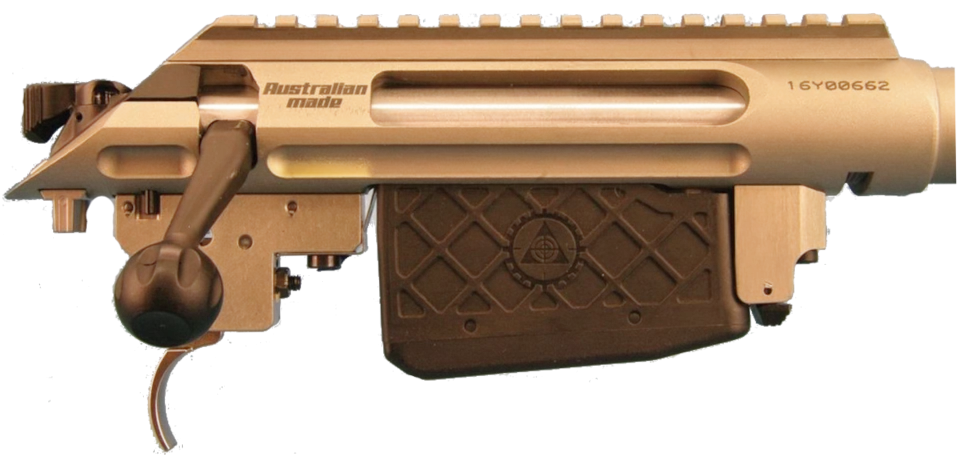
Into the heart and sole of what makes your rifle go boom, the receiver!
There’s a lot that goes into the construction of a rifle, and the bolt and receiver are two of the most important parts.
- Bolt
- Extractor
- Action length
- Magazine/feed type
- Bolt throw
- Safety mechanism
- Reliable feed and constancy
All of these aspects are personal preference, I would encourage you to look at top load or box magazine like a Howa 1500, Sako or Ruger as well as a mag fed system such as a Tika or Lithgow. Top feed systems are generally more versatile as you can acquire aftermarket upgrade kits to change the feed from top load to mag fed, this in some cases comes at the cost of less ridged construction (meaning less accurate), very rare and doesn’t necessarily affect premium brands and models due to superior tech and premium materials.
Receiver stiffness
One of the most important aspect of a rifle is its receiver stiffness. This refers to how resistant the rifle is to flexing or twisting when firing. A rifle with a stiff receiver will be more accurate than one with a flexible receiver.
- Use a thicker material for the receiver.
- Use bracing within the receiver itself. This can be in the form of cross-members or other reinforcing elements.
- Use a heavier barrel. This adds weight and also increases rigidity.
- Use a stiff stock. A stiff stock will not only help to increase stiffness, but it will generally add some extra weight, further reducing felt recoil.
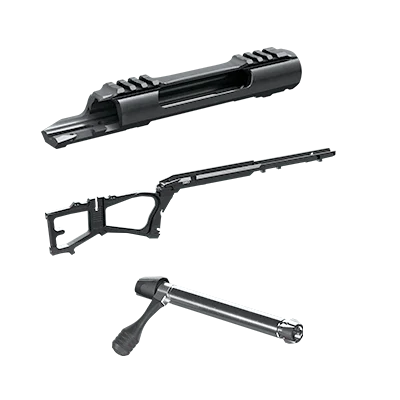
Stock Material
Most would agree that a nicely grained walnut stock is a pleasure to look at, but is it the most practical option for you? If your going to rock it to sleep, pull it out to impress and pass it down through the generations, then maybe it is for you.
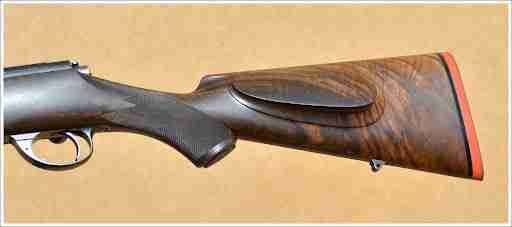
The position of durability when it comes to rifle stocks belongs to those made from synthetic materials. There is an array of man made materials and construction styles used for stocks. You will find carbon fiber, fiberglass, fiberglass wrapped aluminum, nylon, polymer plastics, and polymers with over-molded rubber. There are also aluminum chassis/stocks designed and made specifically for tactical/target applications.
The things you don’t want to skimp on:
- Make sure the barrel is free floating from the stock.
- Ensure you can’t bend the stock with your hands.
- You need to like the feel and shape, again it’s personal.
- Ensure you understand the weight of the stock if you would like a light package

Trigger adjustability
Some rifle triggers come with some degree of adjustability, which is a good thing, since it allows you to tailor the trigger to your own shooting style. There are generally three main adjustments that can be made: sear engagement, overtravel, and pull weight. Sear engagement is the point at which the sear breaks and releases the firing pin. Overtravel is the distance that the trigger can be pulled before it reaches the sear engagement point. Pull weight is how much force is required to pull the trigger. Most shooter’s prefer a light pull weight, somewhere in the range of 1-2 kilograms. It is a good idea to ensure you have a trigger that can make these adjustments, then you can create a trigger that feels just right for you, and that will help you to shoot more accurately. So if you’re not happy with the way your trigger feels, don’t hesitate to experiment with the adjustments until you find a setting that works for you.
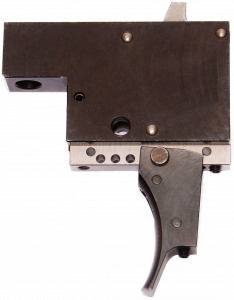
Video - Direct Trigger Adjustments
Weight distribution

Optic Selection
Dropping into the zone of a new rifle scope if your unsure of what your looking at, is like being dropped into 12th grade advanced math in year 8 and expected to understand what the f#@k is going on. I will attempt to simplify it for you. But if you are interested in learning more about optics please click on the banner below.
When looking for a rimfire scope for hunting, keep it simple! You will see so many company’s out there trying to sell you a ballistic drop reticle for your rimfire. Sure they work sometimes, but if your not using a bullet that agrees with the velocity and projectile drop associated with the reticle, or your scope is on the wrong magnification you may as well not bother.
If you want optic quality buy European, its as simple as that, Europeans just make better glass, getting into one of these will usually set you back $700+(AUD). If you want something reliable with good glass quality and a decent warranty your going to be spending $350 to $600 (AUD) and if you want something that might last the car ride home buy below $200 (AUD). The old saying that you should be paying more for your scope than your rifle is not far from the truth, unless your buying a rimfire over $1.5K.
The magnification sweet spot for a rimfire rifle scope is around 3-9 x 40 with a 1 inch tube, you could also look at any fixed or variable under this magnification without any issue. Feel free to look at more magnification if you are plinking. On a hunting rifle, in my opinion, you will be wasting your money.
I have provided a few solid options below from Vortex and Leupold. The Vortex Crossfire is the lower optic quality of the three, with the Leupold VX sitting at the top. The Vortex Diamondback in my opinion represents best value for your rimfire out of this selection.
Scope Rings
Now you have selected your optic you will need something to hold that tube filled with glass on the top of your new rifle. Most rimfire rifles will have a reviver that will take an American 3/8 dovetail or a European 11mm dovetail, some rimfire rings are cross compatible across both of these receivers. 3/8 Inch is measured across the bottom of the dovetail whereas the 11 mm is measured across the top of the dovetail. A 3/8 Inch dovetail is about 12.7 mm across the top. The measurements 3/8 and 11mm are not the same for this reason plus the angles are different.
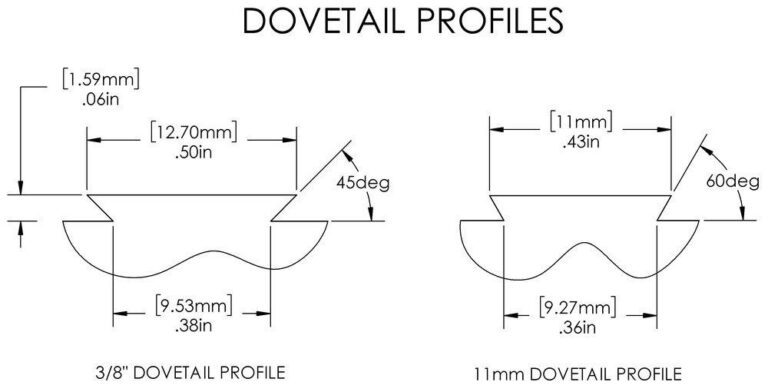
Due to the low recoil of rimfire rifles and to keep weight to a minimum, most rimfire scope rings are made from aluminum. If you are shooting match or going to use your hunting rifle as a workhorse I would recommend you “treat yourself” so to speak and splash out on a set of steel rings, sure they add weight but they are far less prone to letting the team down (losing zero) when your rifle takes a love tap or knock.
Just make sure you take into account your scopes objective lens size (larger the higher) and barrel profile (heavier the higher) when selecting what height rings you will need (Low, Medium or High).
Scope Rails or Mounts
There are many different types of rifle scope rails, and the type that is best for you will depend on the rifle you finally choose and your needs. The most important thing to consider when choosing rifle scope mounts is how they will attach to your rifle. The most common type of attachment is via the Picatinny rail, which is a standard rail system that is found on most modern rifles. Other options include weaver-style rails, belt loops, and dovetail rails.

Finally, you will need to decide on the material that you want your rifle scope mounts to be made from. The most popular options are aluminum and steel, but there are also a variety of other materials that can be used. No matter what type of rifle scope mounts you choose, be sure to pick ones that are durable and will last for many years.
Read more on rails in our article here: Rifle Scope Rails
To Sum Up - Brands
So, now its time to break down the plethora of brands available for you and I. It’s hard to know where to start, there are too many brands available to list, having said this its always good to start the hunt with hard and fast Aussie bred local, the Lithgow. To name a few other really solid contenders which are always good performers, at least in my experience (understanding this always a touchy subject):
- Ruger
- Steyr
- CZ
- Tikka
- Sako
- Bergara
- Lithgow
- Howa
- Browning
- Winchester
- Kimber
- Remington
Have a look into the above, every hunter or enthusiast will try and push their favorite, non-the-less if you end up with one of the above you will undoubtedly be stoked with you selection.
We intend to cover brands blow by blow and model by model and see how they stack up in our opinion against the criteria we have set out in this article.
